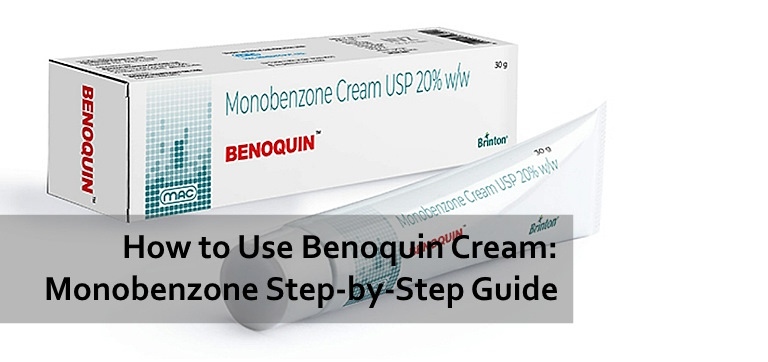How to Use Benoquin Cream: Monobenzone Step-by-Step Guide
Table of Contents
Benoquin Cream, containing monobenzone as its active ingredient, is a topical medication primarily utilized for skin depigmentation. Monobenzone acts by permanently lightening the skin in the areas where it is applied. It is commonly prescribed for conditions such as vitiligo, a disorder characterized by the loss of skin color in patches. Benoquin Cream is available in various strengths, with Benoquin 20 being one of the commonly prescribed concentrations.
This guide provides comprehensive instructions for the safe and effective use of Benoquin Cream.
Understanding Monobenzone and Benoquin
Benoquin Cream is a dermatological formulation containing monobenzone as its active ingredient. Monobenzone is a monobenzyl ether of hydroquinone and is known for its depigmenting properties. When applied to the skin, Benoquin Cream acts by reducing or inhibiting the production of melanin, resulting in skin lightening or depigmentation. This cream is commonly used in the management of conditions such as vitiligo, where patches of depigmented skin occur due to the loss of melanocytes.
Monobenzone Benoquin is available in various concentrations, with Benoquin 20 being one of the commonly prescribed strengths.
-
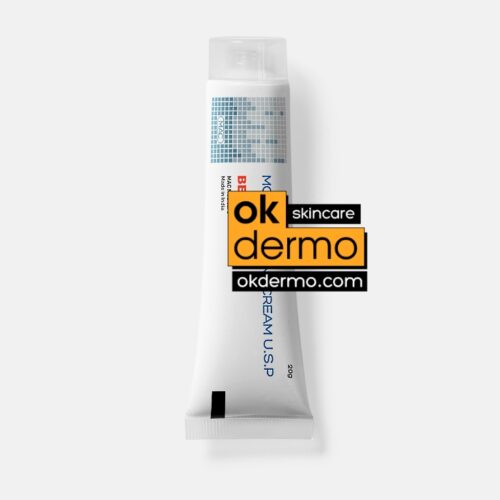
Benoquin® Monobenzone Cream 20%
Monobenzone 20% Depigmenting Agent
Size: 30g / 1.05oz
Brand name: Benoquik, Albaquin, Pigmex
USD $35.00 Add to cart -
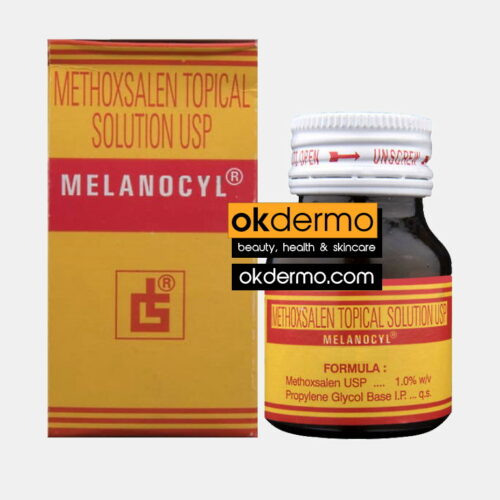
Melanocyl® Methoxsalen Solution
Methoxsalen 1% USP Topical
Size: 25ml / 0.85fl.oz
Brand name: Oxsoralen, 8-Mop, Uvadex
USD $24.00 Add to cart -
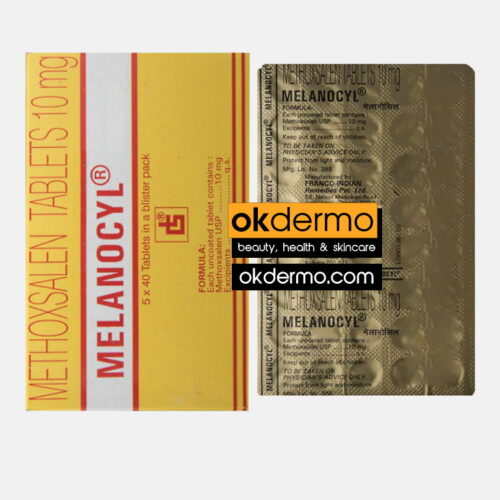
Melanocyl® Methoxsalen Tablets
Methoxsalen 10mg
Size: 40 Tablets
Brand name: Oxsoralen, 8-Mop, Uvadex
USD $26.00 Add to cart -
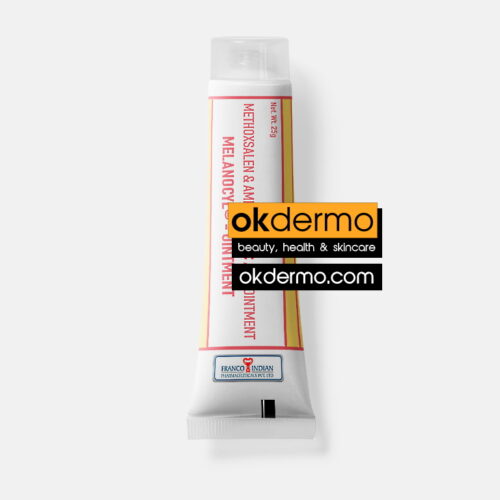
Melanocyl® Methoxsalen Ointment
Methoxsalen 0.75% + Aminobenzoic Acid 2%
Size: 25g / 0.88oz
Brand name: Oxsoralen, 8-Mop, Uvadex
USD $23.00 Add to cart -
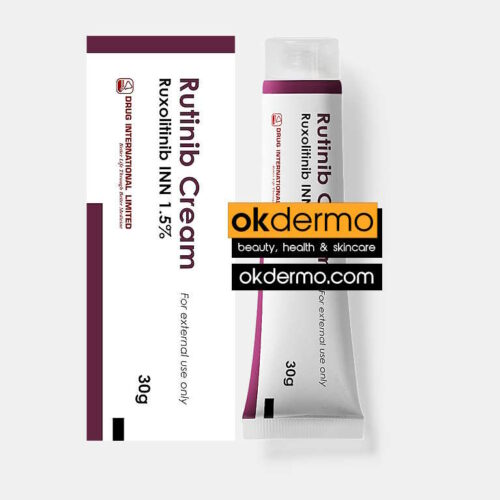
Rutinib® Ruxolitinib Cream
Ruxolitinib 1.5%
Size: 30g / 1.05oz
Brand name: Opzelura
USD $440.00 Add to cart -
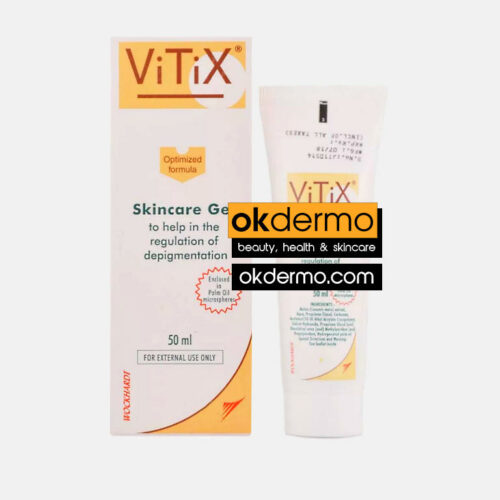
Vitix® Repigmentation Skincare Gel
Extramel® + Cucumis Melo (Melon) Fruit Extract
Size: 50ml / 1.7fl.oz
USD $54.00 Add to cart
Benoquin 20 and its Applications
Benoquin 20 refers to a specific concentration of Benoquin Cream, containing 20% monobenzone as the active ingredient. This formulation is often utilized in the treatment of conditions such as vitiligo, where depigmentation of affected skin areas is desired. Benoquin 20 is applied topically to the affected skin regions.
Benoquin Vitiligo Treatment:
Monobenzone Benoquin is frequently prescribed for the treatment of vitiligo, a chronic skin condition characterized by the loss of pigment-producing cells (melanocytes), resulting in depigmented patches on the skin. The depigmentation properties of monobenzone cream for skin lightening make it an effective option for evening out the skin tone by lightening unaffected areas to match the depigmented patches. Monobenzone Benoquin Cream can help reduce the noticeable contrast between affected and unaffected skin, thus improving the cosmetic appearance and boosting the self-esteem of individuals with vitiligo. Benoquin vitiligo treatment is safe and effective.
Monobenzone on Normal Skin:
Monobenzone, the active ingredient in Benoquin Cream, is primarily recognized for its depigmenting properties and its ability to lighten hyperpigmented areas of the skin. However, it is important to understand that the effects of monobenzone are not limited to treating conditions such as vitiligo. When applied, monobenzone on normal skin, depigmentation is induced, resulting in a lighter skin tone in the treated areas.
Preparing to Use Monobenzone Benoquin Cream
Consultation with a Healthcare Professional:
Prior to initiating treatment with monobenzone cream for skin lightening, it is imperative to schedule a consultation with a qualified healthcare professional, preferably a dermatologist. During this consultation, the healthcare provider will assess the individual’s medical history, current skin condition, and any pre-existing skin conditions or allergies.
Skin Patch Test:
Before applying monobenzone Benoquin Cream to larger areas of the skin, it is recommended to perform a skin patch test to assess for potential sensitivity or allergic reactions. To conduct a patch test, a small amount of Benoquin Cream should be applied to a small, discreet area of the skin, such as the inner forearm or behind the ear. The area should then be observed for any signs of irritation, redness, itching, or other adverse reactions over the course of 24 to 48 hours. If any negative reactions occur during the patch test, the use of Benoquin Cream should be discontinued, and a healthcare professional should be consulted.
Step-by-Step Guide to Using Benoquin Cream
Cleaning the Skin:
Before applying monobenzone cream for skin lightening, it is essential to thoroughly clean the skin in the affected areas using a mild cleanser and water. Gently pat the skin dry with a soft towel, ensuring that no traces of dirt, oil, or other skincare products remain on the skin surface. This step helps to remove impurities and prepares the skin for the optimal absorption of Benoquin Cream.
Applying Benoquin Cream:
- Correct Dosage and Application Frequency:
Follow the dosage instructions provided by your healthcare provider or as indicated on the prescription label. Typically, Benoquin Cream is applied thinly and evenly to the affected areas of the skin, avoiding contact with unaffected areas. The frequency of application may vary depending on your individual condition and response to treatment. It is important to adhere to the recommended dosage and application frequency to achieve optimal results while minimizing the risk of side effects.
- Techniques for Safe and Effective Application:
Use a clean and disposable applicator, such as a cotton swab or cotton ball, to apply monobenzone Benoquin Cream to the affected areas. Avoid using your fingers to prevent contamination and ensure precise application. Apply a thin layer of Benoquin Cream to the depigmented patches of skin, gently spreading it evenly until absorbed. Take care to avoid excessive rubbing or friction, which may irritate the skin. Allow the cream to dry completely before covering the treated areas with clothing or other skincare products.
Monitoring and Adjusting Usage:
Monitor the treated areas of the skin regularly for any changes or reactions following the application of monobenzone cream for skin lightening. This may include changes in skin pigmentation, irritation, redness, or other adverse effects. If you experience any concerning symptoms or unusual skin reactions, discontinue the use of Benoquin Cream and consult your healthcare provider promptly.
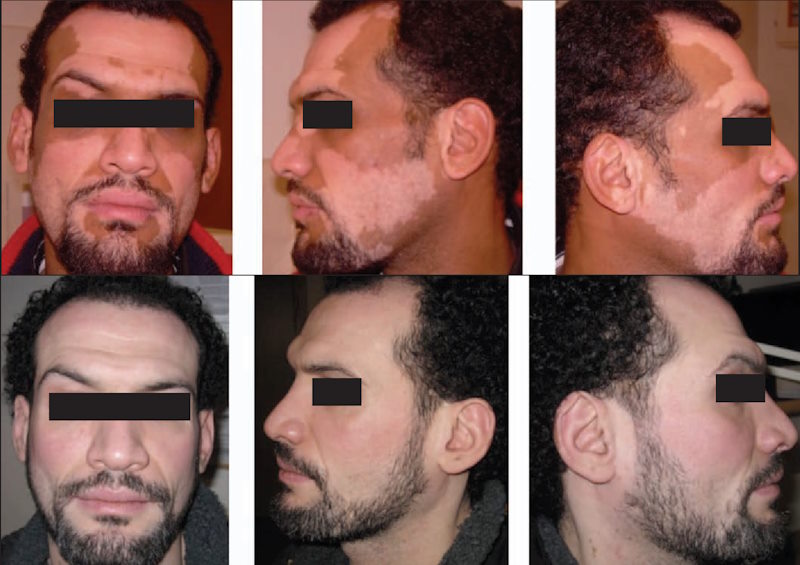
Safety Precautions and Considerations
Potential Side Effects:
- Temporary Discoloration: One of the potential side effects of monobenzone cream for skin lightening is temporary discoloration of the skin. This may manifest as lightening or darkening of the treated areas, particularly during the initial stages of treatment. While this discoloration is usually temporary and may resolve with continued use of the cream, it is important to monitor the skin closely for any persistent changes and to consult a healthcare professional if concerned.
- Sensitivity to Sunlight: Benoquin Cream may increase the skin’s sensitivity to sunlight, leading to a greater risk of sunburn and sun damage. It is crucial to apply sunscreen with a high SPF (sun protection factor) and to limit sun exposure, especially during peak hours, while using Benoquin Cream. Protective clothing and accessories such as hats and sunglasses can also help minimize sun-related risks.
- Skin Irritation: Some individuals may experience skin irritation, redness, itching, or burning sensations upon application of monobenzone Benoquin Cream. If these symptoms persist or worsen over time, discontinue the use of the cream and seek medical advice. Avoid applying Benoquin Cream to broken or inflamed skin, as this may exacerbate irritation.
Contraindications and Warnings:
- Pregnancy and Nursing: Benoquin Cream should be used with caution during pregnancy and breastfeeding, as its safety for unborn babies and infants has not been established. Consult a healthcare professional before using Benoquin Cream if pregnant, planning to become pregnant, or breastfeeding.
- Allergic Reactions: Individuals with a known hypersensitivity or allergy to monobenzone or any other ingredients in Benoquin Cream should avoid its use. Allergic reactions may manifest as rash, itching, swelling, or difficulty breathing. Discontinue use and seek medical attention if allergic symptoms occur.
- Interactions with Other Medications: Inform your healthcare provider about all prescription, over-the-counter, and herbal medications you are currently taking, as monobenzone Benoquin Cream may interact with certain drugs. This includes topical medications and skincare products. Your healthcare provider can provide guidance on potential interactions and adjust your treatment regimen accordingly.
Aftercare and Maintenance
- Moisturizing Routine:
Following the application of monobenzone Benoquin Cream, it is essential to maintain a regular moisturizing routine to keep the skin hydrated and healthy. Choose a gentle, fragrance-free moisturizer that is suitable for your skin type and apply it generously to the treated areas. Moisturizing helps prevent dryness, flakiness, and irritation, which may occur as side effects of Benoquin Cream. Apply moisturizer at least twice daily, or as needed, to maintain optimal skin hydration and comfort.
- Sun Protection Measures:
Protecting the skin from sun exposure is crucial while using monobenzone cream for skin lightening, as it can increase the skin’s sensitivity to sunlight and elevate the risk of sunburn and sun damage. Apply a broad-spectrum sunscreen with a high SPF (sun protection factor) to the treated areas of the skin, even on cloudy days. Reapply sunscreen every two hours or more frequently if swimming or sweating. Additionally, seek shade and wear protective clothing, such as long sleeves, hats, and sunglasses, to minimize sun-related risks.
- Long-Term Usage Considerations:
Long-term use of Benoquin Cream may be necessary for individuals with chronic skin conditions such as vitiligo, but it is essential to monitor the skin closely for any changes or adverse reactions. Periodic evaluations by a dermatologist can help assess the effectiveness of treatment and identify any adjustments needed to maintain optimal results.
Frequently Asked Questions (FAQs) about Benoquin Cream
What is Benoquin cream used for?
Benoquin cream, containing the active ingredient monobenzone, is primarily used for depigmentation of the skin in dermatology. It is commonly prescribed for the treatment of vitiligo, a chronic skin condition characterized by the loss of melanocytes, resulting in depigmented patches on the skin. Benoquin vitiligo treatment works by inhibiting the production of melanin in the skin, leading to lightening or depigmentation of the treated areas. This helps to even out the skin tone by reducing the noticeable contrast between affected and unaffected skin.
Does Benoquin work if you don’t have vitiligo?
While monobenzone Benoquin vitiligo cream is primarily indicated for the treatment of vitiligo, it may also be used off-label for other dermatological conditions characterized by hyperpigmentation or uneven skin tone. However, the effectiveness of Benoquin cream in these cases may vary, and its use should be approached with caution under the guidance of a healthcare professional.
How quickly does Benoquin work?
The onset of action and the speed at which Benoquin cream produces visible results may vary depending on individual factors such as the severity of the condition being treated, the concentration of Benoquin cream used, and the frequency of application. In some cases, noticeable changes in skin pigmentation may occur within weeks to months of starting treatment with Benoquin cream. However, it is important to note that the full effects of Benoquin cream may take several months to become apparent, and continued use is necessary to achieve optimal results.
Is monobenzone cream permanent?
Monobenzone cream for skin lightening, such as Benoquin cream, is known for its depigmenting properties and its ability to permanently lighten the skin in the treated areas. Once applied, monobenzone penetrates the skin and irreversibly destroys melanocytes, the cells responsible for producing melanin pigment. As a result, the depigmentation effects of monobenzone on normal skin and vitiligo skin are typically permanent, meaning that the lightening of the skin is not reversible.
References:
- https://onlinelibrary.wiley.com/doi/abs/10.1111/j.1440-0960.1996.tb01014.x
- https://www.ncbi.nlm.nih.gov/pmc/articles/PMC3533321/
- https://journals.lww.com/melanomaresearch/abstract/2011/04000/topical_application_of_bleaching_phenols__in_vivo.4.aspx
- https://www.google.com/books/edition/_/aTj8DwAAQBAJ?hl
- https://onlinelibrary.wiley.com/doi/abs/10.1046/j.1529-8019.2001.014001029.x
Post by:
Dr.Marcella Jiovanni
Health and Beauty Expert
“Marcella Jiovanni actively promotes the importance of maintaining healthy skin, she envisions the future of dermatology as moving away from pure medical, pharmacological dermatology and flowing more toward a holistic approach to wellness and skincare.”

